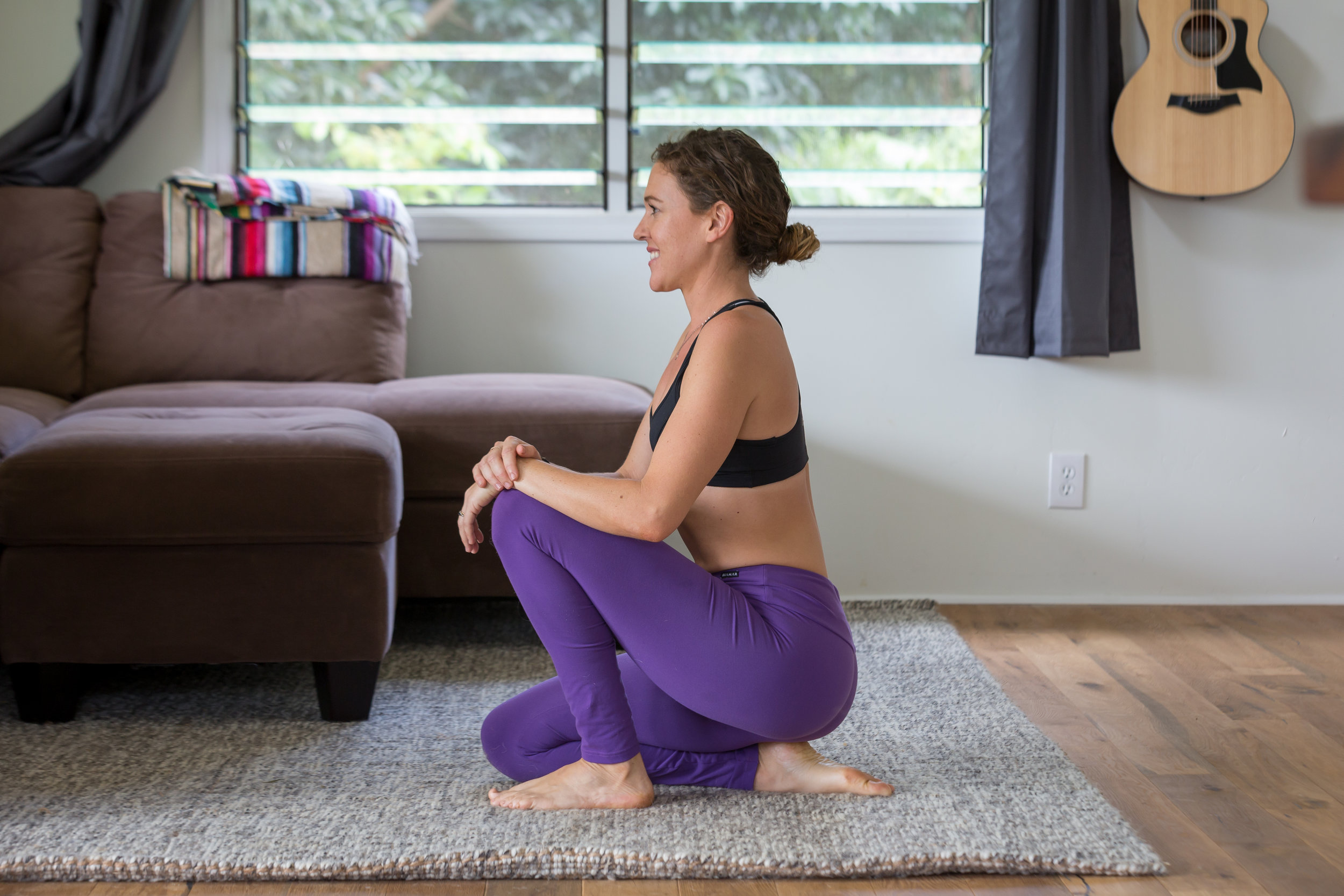Endometriosis, Alignment, and Movement
We all know that physical activity is important for health, but turns out it also is very effective in decreasing endo-associated pain. In fact, according to some research, it may be even more effective than painkillers! Thanks to increased movement, inflammation caused by low oxygen levels in your tissues (hypoxia) is reduced. So you can see that moving more is an important strategy for healing your endo. [1-3]
Yet, this blog is not in support of traditional “exercising.” Truth be told, if you take someone with a) chronic inflammation, b) chronic pain, and c) muscle weakness and tightness, and ask them to do intense HIIT workouts or running, it’s a recipe for disaster.
Rather, the Heal Endo approach to movement is about becoming committed to moving more and better. This is critically important since, to reduce your endo pain and lower inflammation, you need to increase blood flow to your glutes, abdomen, and pelvic floor—all of which require more activity. Not only that, but you need to strengthen your deep core, which will require a new approach to how you move and breathe.
Move More, Sit Less
When I first stumbled upon the idea that moving more (and sitting less) could help quell pelvic pain I was skeptical, to say the least. But my curiosity was piqued after reading an article by biomechanist Katy Bowman on how a 10-day hike had eliminated her menstrual pain (through bringing back blood flow to the core muscles and pelvis), with follow-up comments from other women who had similar results.
Empowered with knowledge, I immediately added more movement to my life to try for myself. I aimed for one 5-mile walk per day, in addition to constant and regular movement throughout the day: sitting on floors instead of chairs, standing desks, squatting, setting a timer every 30 minutes, and walking around my property. The results of this new movement attitude were stunning (more energy, less stress, increased muscle length and strength, and far less pelvic pain to boot), leading me to be an endo-movement convert, as my clients will attest. [4]
Truthfully, most of us are quite sedentary. It’s estimated we only average a total of 1.5 to 2 miles of walking per day, with less than 1 in 5 women getting bare the minimum recommended exercise.
For the folks who are active for an hour a day (what most of us refer to as “working out”), that’s still only about 6 percent of your waking hours! For the rest of the 94 percent? Most of us are probably… sitting.[5]
Sitting: Prison for The Endometriosis Pelvis
Too much sitting is a public health crisis, but it’s a specific problem for endometriosis because it restricts blood flow to the pelvis. Restriction in any blood flow is harmful to the functioning of your body since all of your muscles, tissues, and cells need consistent blood flow. (Ever had your leg fall asleep from sitting the wrong way? That’s what happens.) There’s a scientific word for this, ischemia, which occurs when there’s low to no blood flow to an area.
Although most of us don’t have ischemia of this level too often (where a limb falls fully asleep), you probably have lower levels of ischemia more frequently than you realize. That’s because your body will naturally reduce blood flow to muscles and tissues when they’re either (a) not being used, or (b) being consistently squished.
When we spend 8 to 12 hours a day in a sitting position, we’re not using the entirety of our musculature, and we’re also in a constant state of “squishing” our glutes, hamstrings, and even our genitals. In fact, because sitting decreases the oxygen level of the glutes quickly, this directly reduces pelvic blood flow since they share the same arteries. [6]
To add insult to injury, chronic muscle tension (like sucking in your stomach too much, or trying to hold Kegals) is another form of “squish.” When a muscle is stuck in a contraction it can’t fully function, leading to less blood flow in that area even if something it’s physically pushing on it (like a chair seat).
This means a tense and underused body will end up with some chronic ischemia, which is especially problematic in the case of endo.
Ischemia (too much sitting) Increases Inflammation at Endo Ground Zero
Ischemia causes an intense inflammatory reaction as the body continuously tries to repair and rebuild tissue to increase blood flow without much success (because you’re still not using the muscle). In this way, inflammation that is supposed to be short-lived actually becomes another chronic inflammatory trigger because the muscle or tissue being repaired never seems to “come back to life.” And now this inflammatory reaction will recruit many of the same inflammatory immune factors associated with endo.[7]
Think about it like this: Ischemia = less blood flow, leading to decreased oxygen (hypoxia), which increases inflammation, that is all associated with endometriosis establishment, progression, inflammation, and pain. This is why your goal of reducing inflammation begins with the simple acts of moving more, and sitting less.
How to Move for Endometriosis Exercise?
When you need to sit, make it your new sitting culture to get up and move frequently! Research shows it only takes 15-30 minutes of sitting to create ischemia in the pelvic region, while it only takes 2 minutes of movement to bring the blood back. With that in mind, consider setting a timer for 20–30 minutes of sitting, followed by 2 quick minutes of movement—simply walking around your home or office will do. It may even increase your mental focus when you return. Win-win. [8]
I also encourage you to explore other ways to integrate more movement into your regular activities, to keep ischemia at bay. These movements add up over the day and will start to rehabilitate your body, develop a stronger cardiovascular system that infuses your tissues and organs with more oxygen, activate the lymphatic system, and deliver nutrients to every cell in your body. If you’re interested in learning more about moving more in our sedentary world, click the links below!
The following information is broken down by position: sitting, standing, walking, and squatting. Each bit will give you insight into how to better hold your body so that you move through your pelvis, and gives some correctives to help you begin to shift.
Breathe Properly with Endometriosis
Resetting your body mechanics will help you breathe with your diaphragm, which is like a free abdominal massage 23,000 times per day. This will help bring circulation back to the area you need it most: your abdominal and pelvic cavities
Sit Properly for Endometriosis
Sitting for elongated periods of time is really tough on the body, but it doesn't have to be as degenerative. Learn tricks to help turn your forced sitting time (work or school) into a less stressful time on your body.
Stand Better for Endometriosis
Re-learning how to stand correctly may greatly improve your energy level while decreasing tension, anxiety, and pain. If you have any sort of pelvic floor issue this is even more important. When you let gravity flow through your center uninhibited you will let the chronic tension in your body struggling to hold you up (that you may not even know is there) begin to release. Doing so will allow you to move more freely, have more energy, and, of course, deal with less pelvic pain. Here you'll learn the basics of standing anew.
Walk Stonger for Endometriosis
Walking isn't challenging, persay, you can do it without falling after all. But walking correctly might be another story. When we look at the loads placed on the body while walking, it's imperative to have a strong foundation so that, you guessed it, the main loads are falling through the pelvis and we're moving forward with strength. Ever heard "walking is like controlled falling"? Not true! Here we'll look at the basics of walking and a few exercises that will help your walk be the most efficient and beneficial it can be.
Pelvic Floor and Core Dysfunction
Both important, both connected! Learn why kegals may be making your pelvic floor connection worse, how to visualize relaxation of this hard-to-reach muscle group, and how squatting will a) turn on your glutes and b) tone your nether regions.
Awad, E., Ahmed, H., Yousef, A., & Abbas, R. (2017). Efficacy of exercise on pelvic pain and posture associated with endometriosis: Within subject design. Journal of Physical Therapy Science, 29(12), 2112–2115. https://doi.org/10.1589/jpts.29.2112
Koppan, A., Hamori, J., Vranics, I., Garai, J., Kriszbacher, I., Bodis, J., Rebek-Nagy, G., & Koppan, M. (2010). Pelvic pain in endometriosis: painkillers or sport to alleviate symptoms? Acta Physiologica Hungarica, 97(2), 234–239. https://doi.org/10.1556/APhysiol.97.2010.2.10
Merino, J. J., Roncero, C., Oset-Gasque, M. J., Naddaf, A., & González, M. P. (2014). Antioxidant and protective mechanisms against hypoxia and hypoglycaemia in cortical neurons in vitro. International Journal of Molecular Sciences, 15(2), 2475–2493. https://doi.org/10.3390/ijms15022475
Aching for an answer. Nutritious Movement. Accessed February 12, 2022, from: https://www.nutritiousmovement.com/aching-for-an-answer/
Blackwell, D. L., & Clarke, T. C. (2018). State variation in meeting the 2008 federal guidelines for both aerobic and muscle-strengthening activities through leisure-time physical activity among adults aged 18–64: United States, 2010–2015. National Health Statistics Reports, (112), 1–22.
Abraham, P., Picquet, J., Vielle, B., Sigaudo-Roussel, D., Paisant-Thouveny, F., Enon, B., & Saumet, J. L. (2003). Transcutaneous oxygen pressure measurements on the buttocks during exercise to detect proximal arterial ischemia: Comparison with arteriography. Circulation, 107(14), 1896–1900. https://doi.org/10.1161/01.CIR.0000060500.60646.E0
Krishnasamy, K., Limbourg, A., Kapanadze, T., Gamrekelashvili, J., Beger, C., Häger, C., Lozanovski, V. J., Falk, C. S., Napp, L. C., Bauersachs, J., Mack, M., Haller, H., Weber, C., Adams, R. H., & Limbourg, F. P. (2017). Blood vessel control of macrophage maturation promotes arteriogenesis in ischemia. Nature Communications, 8(1), 952. https://doi.org/10.1038/s41467-017-00953-2
Regan, M. A., Teasell, R. W., Wolfe, D. L., Keast, D., Mortenson, W. B., Aubut, J. A., & Spinal Cord Injury Rehabilitation Evidence Research Team. (2009). A systematic review of therapeutic interventions for pressure ulcers after spinal cord injury. Archives of Physical Medicine and Rehabilitation, 90(2), 213–231. https://doi.org/10.1016/j.apmr.2008.08.212






